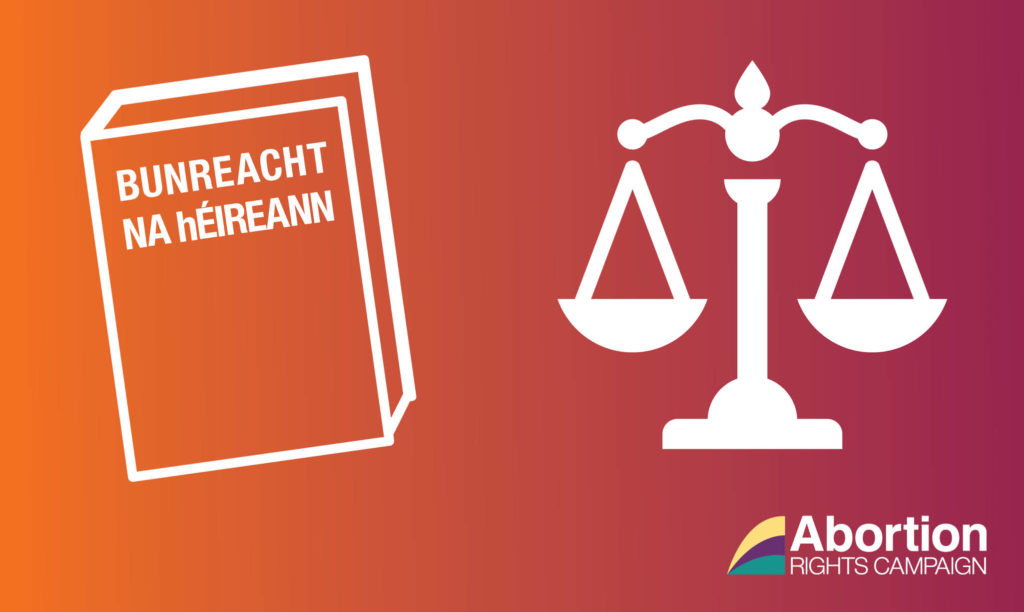
In our last post, we outlined the differences between the constitution and legislation and how this relates to abortion in Irish law. This post looks in more detail at what we are voting on, and what will happen after we vote Yes to repeal.
What are we voting on?
Due to the incredible public support for repeal of the 8th, and after the lengthy deliberations by the Citizens Assembly and the Joint Oireachtas Committee on the 8th Amendment, the Government finally called for a referendum.
In May, we will be asked if we want to remove the 8th Amendment from the Irish Constitution and replace it with this wording:
“Provision may be made by law for the regulation of termination of pregnancies.”
If the vote is passed, the Oireachtas will be able to write and change laws about abortion. The constitutional barrier that prevents us from improving our laws will be gone.
If the vote is not passed, there will be no change to the current situation. Abortion will remain illegal in almost all circumstances.
While removing the 8th Amendment will allow the Oireachtas to make changes to laws about abortion in the future, we are not voting in May on the content of future legislation. If the 8th Amendment is removed, the content of any possible future abortion law and regulations will be decided by TDs and Senators as part of the legislative process. You can contact your local TD to let them know your views. However, no changes can be made until the 8th Amendment is removed from the constitution.
Okay but once the 8th Amendment is gone, what next?
Immediately after the 8th Amendment is removed from the constitution, the Protection of Life During Pregnancy Act (PLDPA) will still be the law, so abortion will still be illegal in almost all circumstances. However after the referendum, the Government intends to try to change the laws through legislation.
Minister for Health, Simon Harris, has outlined a proposal which is based on the recommendations of the Joint Oireachtas Committee on the 8th Amendment. These recommendations were made based on the testimony of expert witnesses, which you can read more about here.
The key points of this proposal are:
- It will be legal for doctors to provide abortion care on the grounds of risk to life or health of pregnant women, without a distinction between the mental and physical health of a woman. Two doctors will have to agree that there is a risk to the woman’s life or health.
- It will be legal for doctors to provide abortion care in cases of a foetal condition which is likely to result in death before or shortly after birth. As above, the assessment of two doctors will be required.
- It will be legal for doctors to provide abortion care to women who request it up to the 12th week of pregnancy, without a “specific indication”, as we have discussed in this previous blog post.
- A pregnant person who accesses abortion will be not be criminalised.
- It will remain illegal to provide abortion outside these provisions.
This legislation will have to be debated and passed through the Oireachtas before it can become law.
What does Voting Yes mean?
By voting Yes in May, we are coming together to recognise that abortion should be a regulated healthcare decision, not a constitutional issue. It means the Oireachtas will be able to make laws that regulate abortion care in line with medical best practice. It is the first step in allowing women to access safe abortion care with the support of their doctor, friends and family, at home.
How do I vote?
Check out our previous blogpost on how to ensure you are registered to vote here.
How can I help?
This campaign to remove the 8th Amendment is happening in every part of Ireland thanks to the support of people like you. You can help by volunteering, donating, canvassing in your local area, and even by talking to your friends and family. Let them know that voting Yes will help make Ireland a more compassionate and caring place for everyone who can get pregnant.Learn more at the Together for Yes website.

